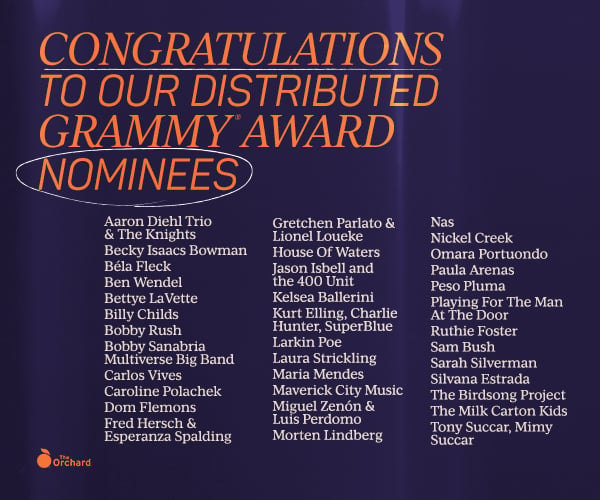Sony Music CEO Rob Stringer this week gave a lengthy address to Sony Corp investors in Japan – telling them that his company “would like there to be as many competitive [streaming] platforms in the marketplace as possible”.
Speaking in Tokyo on Tuesday (May 22) – just hours after Sony Corp confirmed its acquisition of a majority stake in EMI Music Publishing – Stringer covered a range of topics including Sony Music’s financial optimism, the promise of emerging markets and the performance of distribution company The Orchard since Sony fully acquired it in 2015.
He also addressed investor concerns over Spotify potentially growing its global market share to a level of unrivalled dominance – in addition to the much-discussed prospect of streaming platforms becoming ‘labels’ in the future by signing artists directly.
“Currently Sony Music is the No.2 global music company with 25.1% market share in the markets where we operate outside of Japan,” said Stringer, referring to Sony’s performance in its last fiscal year (FY 2017) – the 12 months to end of March 2018.
“We are clearly encouraged by the overall performance of the market; the global streaming market outside of Japan was up 44% year-over-year [for the industry in calendar 2017]. This drove an overall market growth of approximately 10.5% [outside Japan, to $14.5bn].
“This marks the third year in a row of meaningful market growth after more than a decade of decline.”
Speaking alongside Sony Music COO Kevin Kelleher, Stringer focused exclusively on Sony Music’s global performance outside Japan – a market which is the corporate responsibility of another Sony division not run by the British exec, Sony Music Entertainment Japan (SMEJ).
“In the last fiscal year, we renewed our deals with existing partners [such as] Spotify, Apple, Amazon, YouTube and Tencent – and created a new partnership with Facebook,” said Stringer.
“These partners will be integral to our industry’s continued growth and we’ve aligned our interests with them to further drive paid subscription adoption.
“As we develop this growth together, it is vital that we maintain a balanced and mutually respectful relationship with our music distribution partners. We also support new entrants into the marketplace at the global, regional and local levels to drive this paid subscriber growth.”

At one point, Stringer faced a challenging question from an analyst: what if Spotify increased its global market share in streaming to 70%-plus? Would that be a risk to Sony’s business and its ability to negotiate with such a digital partner?
“That would be a risk, which is why we actively encourage lots of platforms,” acknowledged Stringer. “We have to make sure we work with everybody in a way which encourages a competitive landscape.
“For instance, YouTube has just launched a subscription music service… We did new deals with Spotify, Apple and YouTube only last year. We’re crossing each bridge as we come to it but at the moment we feel we have a diverse landscape.”
Kevin Kelleher noted that, in calendar 2017, the largest industry revenue growth came in Latin-Iberia markets and Asia Pacific (ex-Japan) – up 17.3% and 22.9% respectively.
Said Stringer: “We are fully focused on developing viable subscription businesses in emerging markets such as China and India, where previously only very limited physical or digital download business existed.”
“Over the long term, once markets are established, [our] focus will turn to increasing revenue per user by enhancing the product and plan offerings.”
He added: “Over the long term, once markets are established, [our] focus will turn to increasing revenue per user by enhancing the product and plan offerings.
“This includes greater differentiation between free and paid tiers as well as up-sell opportunities driven by new product and content configurations, expanding the use of voice [control] at home and in the car, as well as launching pre-paid subscriptions in markets such as Latin America and India.”

Stringer then turned his attention specifically to The Orchard, announcing that Sony had nearly doubled the distribution/services company’s EBITDA since spending $200m to fully acquire it three years ago.
Said Stringer. “Understanding that independent labels and artists were poised to gain market share, we acquired 100% of The Orchard three years ago to service a segment of the market that was looking for [partnership] outside of a traditional major music company.
“Understanding that independent labels and artists were poised to gain market share, we acquired 100% of The Orchard three years ago.”
“[The Orchard’s] capabilities in creative marketing, distribution and analytics make us the leading choice globally for independent labels and artists. As part of this strategy, we acquired Finetunes and Phonofile, two leading Europe-based music distribution companies, to strengthen our position in Germany and the Nordic territories.”
Stringer later added: “We bought The Orchard to help with market share – and everywhere The Orchard is now being built up it’s helping with market share.”

Stringer also tackled the importance of data to Sony’s modern day business – and was unapologetic about the amount of money being invested in tools to give his company an edge.
“As a global company, we have aggressively invested in data and analytical tools to interpret the billions of commercial and marketing data points we receive from partners and services around the world on a daily basis,” he said.
“While our capabilities are global in scale, our execution is hyper-targeted by market.”
“While our capabilities are global in scale, our execution is hyper-targeted by market. With our proprietary tools, we are able to discover artists earlier and drive sales and marketing efficiency, monitor customer behaviour and guide creative decisions.
“In addition, we have built artist-facing dashboards and royalty portals that make us more attractive to our artist community.
“However complex our digital strategy, at our core will always be creativity and musical instinct. Our key competencies of identifying and developing artists, and supporting their vision, must be what differentiates us from our competitors. We are looking to reinforce this strength by maximising back office efficiencies and shifting more of our workforce into creative, artist-facing functions.”
Stringer added that Sony’s current content strategy is “focused on genres that are growing with the new market such as hip-hop, Latin rhythmic pop, and electronic/dance music”, while he said that the company is currently “increasing our release flow to drive market share”.
The exec pointed out that his Sony Music team is keen to widen its business further into ancillary areas of recorded music.
“We must expand the number of creative and business services we provide to our artists including artist management, branding, touring and merchandise, in order to increase revenue flow and build stronger and more transparent relationships with the artists,” he said.
“In the search for this transparency, we are evolving our contractual relationships with artists ensuring that deal structures are balanced, flexible and futuristic to adjust to the changing business landscape.”
Stringer then faced some tough questions from investors and analysts.
He was asked why, despite his optimism, Sony’s worldwide corporate music division (including Japan) – across publishing, records and other non-music areas such as ‘Visual Media & Platform’ – is currently projecting a decline in annual operating income for FY2018.
Stringer pointed out that Sony Music Entertainment Japan was held separately from his Sony Music Entertainment division – indicating that this was an essential clarification.
Here’s one reason why: Sony’s ‘music’ division in Japan has benefitted from a huge bump from ‘Visual Media & Platform’ (VM&P) revenues in recent years thanks to the runaway success of a mobile video game, Fate/ Grand Order. Sales of the game could decline in the coming years. VM&P turned over the equivalent of $2.2bn in calendar 2017.
Unfavourable currency movements have also been factored in to Sony’s 2018 forecast.
Said Stringer: “We [SME, ex-Japan] are very optimistic about our numbers for the next three years, and we’ve been going up each year for the past three years.”
Stringer noted that Sony Music’s investment in data tools was bound to affect the firm’s annual operating income – but he said the idea of cutting this investment at the current juncture would be short-sighted.
“I think it would be detrimental to our business if we didn’t diversify our investment opportunities over the next three years,” said Stringer.
“If we stand still and just collect the money now in three years time we’ll be in a very different place.”
“With our revenue increasing over the past three years we’ve had more opportunity to be positive about the future of our business. If we stand still and just collect the money now in three years time we’ll be in a very different place.”
He added: “All of our competitors, including the digital platforms, are investing in the music business. We are looking at any business opportunity that is complementary to our future strategy.”

Stringer was also asked about the possibility of streaming platforms ‘signing’ artists to exclusive distribution deals – moves from which, it was suggested, the likes of Apple and Amazon wouldn’t need to generate a profit.
Is that a potential future threat to the major labels?
“Any time that artists are encouraged to be on one platform is a risk to our business,” said Stringer. “Obviously the moves that have been made by subscription platforms so far [for artist exclusives] are related to getting paid subscribers on their platforms. So far, we’ve been able to mitigate those circumstances.
“We happen to believe that one platform isn’t a global solution for an artist as of today. We think there needs to be multiple platforms [to work with] for an artist to be successful on a global level.
“We encourage them to use multiple platforms to get their music across to the consumer. At the moment, we feel encouraged that artists understand [that].”
Analysts were forbidden from asking Stringer and Kevin Kelleher about the purchase of a 60% stake in EMI Music Publishing, but a few tried anyway.
Stringer offered a polite “no comment”, before adding “we’re very happy that Sony Corporation invests in music content, and it happened this morning”.Music Business Worldwide





